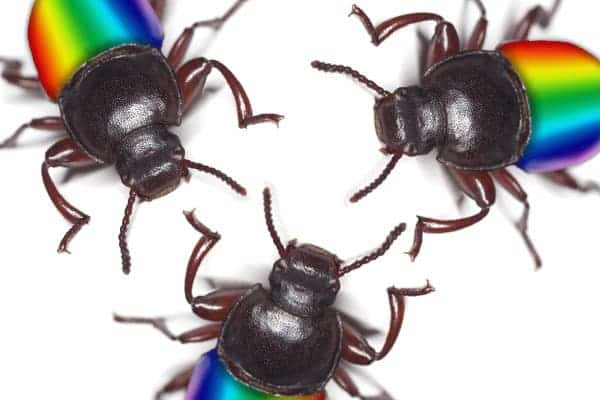Search This Blog
Wednesday, 30 October 2013
Tuesday, 29 October 2013
IMAGINARY FRIENDS HELP CHILDREN FACE CHALLENGING TASKS AS ADULTS
Lots of children have imaginary friends, something which is generally frowned upon by adults and seen as a bad thing. But now, a study published in Experimental Child Psychology has shown that young children’s habit of talking to imaginary friends develops their inner dialogue that helps them to deal with challenging tasks now and later
Kepler finds first known tilted solar system
Did you ever wonder why the planets from our Solar System are all in the same plane? They formed from a flat disc of gas and dust revolving around the Sun’s equator – Earth’s orbit makes an angle of just 7.2 degrees with the plane of the Sun’s equator, and this is similar for all the 9 8 planets (sorry Pluto). This is the case with pretty much every solar system astronomers have discovered so far.
However, five years ago, they began observing planets orbiting at steep angles to their stars’ equators; some planets even spin in the opposite direction to their star. But not a single one had a misaligned multiplanetary solar system – until now.
Daniel Huber of NASA’s Ames Research Center in Moffett Field, California, and his colleagues looked at Kepler-56, a star roughly 860 parsecs (2,800 light years) from Earth; it has two planets which orbit their sun closer than Mercury does to ours. Observations on this system revealed that the plane of the star’s equator tilts 45 degrees to the planets’ orbits.
Read more at http://www.zmescience.com/space/kepler-tilted-solar-system-21102013/#CgEjv2RasGcvC45X.99
Did you ever wonder why the planets from our Solar System are all in the same plane? They formed from a flat disc of gas and dust revolving around the Sun’s equator – Earth’s orbit makes an angle of just 7.2 degrees with the plane of the Sun’s equator, and this is similar for all the 9 8 planets (sorry Pluto). This is the case with pretty much every solar system astronomers have discovered so far.
However, five years ago, they began observing planets orbiting at steep angles to their stars’ equators; some planets even spin in the opposite direction to their star. But not a single one had a misaligned multiplanetary solar system – until now.
Daniel Huber of NASA’s Ames Research Center in Moffett Field, California, and his colleagues looked at Kepler-56, a star roughly 860 parsecs (2,800 light years) from Earth; it has two planets which orbit their sun closer than Mercury does to ours. Observations on this system revealed that the plane of the star’s equator tilts 45 degrees to the planets’ orbits.
Read more at http://www.zmescience.com/space/kepler-tilted-solar-system-21102013/#CgEjv2RasGcvC45X.99
Insect homosexuality just a case of mistaken identity
Some of you might find it surprising to hear that a lot of animals engage in homosexual behavior. Close to 1,500 species, ranging from primates to gut worms, have been observed engaging in such behavior and this is well documented for 500 of them. No one comes close to insects and spiders, though, which have a significantly larger homosexual/hetero ratio out of all animals. Biologists and animal behaviorists have attempted to explain this proposing various theories, but lack of evidence has failed to substantiate any of these. A recent study found insect homosexuality, though still the result of an adaptive trait, can be explained and supported though a very simple explanation: it’s just a case of mistaken identity.
Deep in the Amazon jungle, a tarantula gently oversees from the comfort and safety of a Brazilian nut tree. When suddenly…
“Hey! Do you mind?”
“What? You’re not into me?”
“I’m a DUDE, man!”
“Sorry, sorry… I thought you were a female, bro. Ishhh…. you know these things happen often”
Now, some of you might find this kind of explanation unrealistic, but it does make sense after you read on. In birds and mammals, homosexual behavior (sexual activity, courtship, affection, pair bonding, and parenting among same-sex animal pairs) has been shown to have evolutionary benefits. It provides “practice” for young adults, means of disposing of old sperm, discourages predators, distracts competitors. and maintains alliances within groups. Biologists have tried to explain homosexual behavior in insects and spiders arguing the same benefits seen in other animals engaging in homosexual behavior applies to them as well.
[RELATED] The weird world of animal sex
After studying 110 species of spiders and insects, Dr. Inon Scharf of Tel Aviv University’s Department of Zoology and Dr. Oliver Martin of ETH Zurich have found that homosexual behavior in bugs is probably accidental in most cases, though.
When studying behaviorism it’s important to put costs and benefits into balance to filter out unfounded hypotheses. In general there is no clear benefit to homosexual behavior in insects, however its cost is just as large as heterosexual behavior – expending sperm, wasting time that could go toward other activities, and boosting the risk of injury, disease, and predation. Heterosexuality has one definite benefit and advantage over homosexuality, though – procreation. Despite this, in some species, up to 85 percent of males engage in homosexual behavior.
There are no clear benefits to homosexuality and the costs are just as high as heterosexuality. The only viable explanation, considering the high count, is that insects and spiders mistake males for females when mating. Why? In some cases, males carry around the scents of females they have just mated with, sending confusing signals to other males. In other cases, males and females look so similar to one another that males cannot tell if potential mates are female until after they have mounted them. And there are other things as well, but really why is it so hard for insects to discriminate genders? Again, it all comes to cost.
Waiting for too long to discriminate if the potential mate in front of you is male or female may translate into a lost opportunity. In other words, the risk of mating with a peer of the same sex is canceled by the more undesirable risk of missing a procreating mate. This explanation is supported by the fact that many species that exhibit homosexual behavior also mate with related species or inanimate objects, like beer bottles—indicating a general tendency toward misidentification. And this might not be all there is to insect and spider homosexuality.
Read more at http://www.zmescience.com/research/insect-homosexuality-just-a-case-of-mistaken-identity/#PDbxSckEM5kHz7ge.99
Some of you might find it surprising to hear that a lot of animals engage in homosexual behavior. Close to 1,500 species, ranging from primates to gut worms, have been observed engaging in such behavior and this is well documented for 500 of them. No one comes close to insects and spiders, though, which have a significantly larger homosexual/hetero ratio out of all animals. Biologists and animal behaviorists have attempted to explain this proposing various theories, but lack of evidence has failed to substantiate any of these. A recent study found insect homosexuality, though still the result of an adaptive trait, can be explained and supported though a very simple explanation: it’s just a case of mistaken identity.
Deep in the Amazon jungle, a tarantula gently oversees from the comfort and safety of a Brazilian nut tree. When suddenly…
“Hey! Do you mind?”
“What? You’re not into me?”
“I’m a DUDE, man!”
“Sorry, sorry… I thought you were a female, bro. Ishhh…. you know these things happen often”
Now, some of you might find this kind of explanation unrealistic, but it does make sense after you read on. In birds and mammals, homosexual behavior (sexual activity, courtship, affection, pair bonding, and parenting among same-sex animal pairs) has been shown to have evolutionary benefits. It provides “practice” for young adults, means of disposing of old sperm, discourages predators, distracts competitors. and maintains alliances within groups. Biologists have tried to explain homosexual behavior in insects and spiders arguing the same benefits seen in other animals engaging in homosexual behavior applies to them as well.
[RELATED] The weird world of animal sex
After studying 110 species of spiders and insects, Dr. Inon Scharf of Tel Aviv University’s Department of Zoology and Dr. Oliver Martin of ETH Zurich have found that homosexual behavior in bugs is probably accidental in most cases, though.
When studying behaviorism it’s important to put costs and benefits into balance to filter out unfounded hypotheses. In general there is no clear benefit to homosexual behavior in insects, however its cost is just as large as heterosexual behavior – expending sperm, wasting time that could go toward other activities, and boosting the risk of injury, disease, and predation. Heterosexuality has one definite benefit and advantage over homosexuality, though – procreation. Despite this, in some species, up to 85 percent of males engage in homosexual behavior.
There are no clear benefits to homosexuality and the costs are just as high as heterosexuality. The only viable explanation, considering the high count, is that insects and spiders mistake males for females when mating. Why? In some cases, males carry around the scents of females they have just mated with, sending confusing signals to other males. In other cases, males and females look so similar to one another that males cannot tell if potential mates are female until after they have mounted them. And there are other things as well, but really why is it so hard for insects to discriminate genders? Again, it all comes to cost.
Waiting for too long to discriminate if the potential mate in front of you is male or female may translate into a lost opportunity. In other words, the risk of mating with a peer of the same sex is canceled by the more undesirable risk of missing a procreating mate. This explanation is supported by the fact that many species that exhibit homosexual behavior also mate with related species or inanimate objects, like beer bottles—indicating a general tendency toward misidentification. And this might not be all there is to insect and spider homosexuality.
Read more at http://www.zmescience.com/research/insect-homosexuality-just-a-case-of-mistaken-identity/#PDbxSckEM5kHz7ge.99
Gold growing on trees offers a new prospecting tool
The old saying “money doesn’t grow on trees” is often recited to mind squandering youth of the value of a hard earned buck. Things turn really funny when you hear that gold, as in the actual glittering chemical element that money is used to be based on, grows on trees. In Australia, to be more precise, geochemists at CSIRO’s Earth Science and Resource Engineering division in Kensington found that trees that grew on gold deposits had a concentration of gold particles at the surface of their leaves 40 times higher than trees that grew on normal soil.
The tree studied by the researchers led by Mel Lintern, a geochemist with the Commonwealth Scientific and Industrial Research Organisation (Australia’s national science agency) is a certain Eucalyptus tree which grew above a known gold deposit. The deposit is about the size of a football field and lies at least 30 meters below ground – too little for too much of an effort to be worth the exploitation. What scientists have learned after gathering twigs, bark and a myriad of trees however may be of greater value. Imagine prospecting operations that are both cheap and non-invasive: as easy as putting a leaf under a microscope.
The old saying “money doesn’t grow on trees” is often recited to mind squandering youth of the value of a hard earned buck. Things turn really funny when you hear that gold, as in the actual glittering chemical element that money is used to be based on, grows on trees. In Australia, to be more precise, geochemists at CSIRO’s Earth Science and Resource Engineering division in Kensington found that trees that grew on gold deposits had a concentration of gold particles at the surface of their leaves 40 times higher than trees that grew on normal soil.
The tree studied by the researchers led by Mel Lintern, a geochemist with the Commonwealth Scientific and Industrial Research Organisation (Australia’s national science agency) is a certain Eucalyptus tree which grew above a known gold deposit. The deposit is about the size of a football field and lies at least 30 meters below ground – too little for too much of an effort to be worth the exploitation. What scientists have learned after gathering twigs, bark and a myriad of trees however may be of greater value. Imagine prospecting operations that are both cheap and non-invasive: as easy as putting a leaf under a microscope.
Dino impact also wiped bees
Currently, the widely accepted theory is that an asteroid or comet struck our planet 66 million years ago (the Cretaceous-Paleogene event, or K-Pg event), the impact and its effects basically wiping out dinosaur populations. This extinction however was selective – in that it affected some groups much more than it affected others.
The main problem when studying bees is that they leave behind a smaller fossil record than dinosaurs, and therefore it’s very hard to trace patterns. The paleontologists used molecular phylogenetic analyses (evolutionary relationships) to show that one bee group, the Xylocopinae, which originated in the mid-Cretaceous was all but wiped out by the catastrophic event. Previous studies had suggested a widespread extinction among flowering plants during the Cretaceous-Paleogene extinction event, and many assumed that this plant downfall also left marks in pollinator populations, but until now, this remained a theory.
Currently, the widely accepted theory is that an asteroid or comet struck our planet 66 million years ago (the Cretaceous-Paleogene event, or K-Pg event), the impact and its effects basically wiping out dinosaur populations. This extinction however was selective – in that it affected some groups much more than it affected others.
The main problem when studying bees is that they leave behind a smaller fossil record than dinosaurs, and therefore it’s very hard to trace patterns. The paleontologists used molecular phylogenetic analyses (evolutionary relationships) to show that one bee group, the Xylocopinae, which originated in the mid-Cretaceous was all but wiped out by the catastrophic event. Previous studies had suggested a widespread extinction among flowering plants during the Cretaceous-Paleogene extinction event, and many assumed that this plant downfall also left marks in pollinator populations, but until now, this remained a theory.
How language affect the way toddlers learn to count
A new study made by a team of international scientists found that English-speaking toddlers learn the concept of number “one” faster than than Japanese- and Chinese-speaking kids, while Arabic and Slovenian speaking kids learned to grasp the idea of number “two” faster than their English-speaking counterparts. The study provides a new set of evidence supporting the already entrenched idea that language affects the way we grasp numbers at an early age.
Some languages have completely different clauses and noun agreements, which apparently influence cognition. American linguist Benjamin Whorff famously argued that Eskimos have 200 words for snow, indicating that they think differently about the substance than do, say, English-speakers. Other scientists have disputed that the word count is that high, or that it really reflects different ways of thinking. Take music for instance; Japanese speakers sense rhythm differently than westerners, something that’s been attributed to both culture and language.
Examples could go on, but it’s interesting to see how children who are just beginning to speak differ function of their mother tongue. The researchers tested dozens of two- to four-year-old English, Arabic and Slovenian speakers , asking them to perform various tasks like ”Put two buttons in the box” and name “What’s on this card?”.
[RELATED] Humans think more rationally in a foreign language, study finds
Indifferent of age, far more Arabic and Slovenian speakers knew the concept of “two” than English speakers. The difference is quite staggering: 42 percent of the Slovenian two-year-olds knew “two,” while only four percent of English two-year-olds did. Also, Slovenian and Arab toddlers were more likely to grasp the number two than Russian, Japanese and Chinese toddlers. Why? In Slovenian, for instance, speakers have distinct known for singular nouns, nouns in twos, and nouns in numbers three or greater. In Slovenian one button is a gumb, two buttons are gumba, and three or more buttons are gumbi. This noun agreement, different from English where there’s only singular and plural, likely helps the toddlers understand numbers better.
But the lead doesn’t last much. As they get older, English speaking kids actually outperform Slovenians in number higher up. What the study shows, ultimately, is that language plays an important role in acquiring low numbers.
Read more at http://www.zmescience.com/research/how-language-affect-the-way-toddlers-learn-to-count/#GomcJIMO3QOz7fEj.99
A new study made by a team of international scientists found that English-speaking toddlers learn the concept of number “one” faster than than Japanese- and Chinese-speaking kids, while Arabic and Slovenian speaking kids learned to grasp the idea of number “two” faster than their English-speaking counterparts. The study provides a new set of evidence supporting the already entrenched idea that language affects the way we grasp numbers at an early age.
Some languages have completely different clauses and noun agreements, which apparently influence cognition. American linguist Benjamin Whorff famously argued that Eskimos have 200 words for snow, indicating that they think differently about the substance than do, say, English-speakers. Other scientists have disputed that the word count is that high, or that it really reflects different ways of thinking. Take music for instance; Japanese speakers sense rhythm differently than westerners, something that’s been attributed to both culture and language.
Examples could go on, but it’s interesting to see how children who are just beginning to speak differ function of their mother tongue. The researchers tested dozens of two- to four-year-old English, Arabic and Slovenian speakers , asking them to perform various tasks like ”Put two buttons in the box” and name “What’s on this card?”.
[RELATED] Humans think more rationally in a foreign language, study finds
Indifferent of age, far more Arabic and Slovenian speakers knew the concept of “two” than English speakers. The difference is quite staggering: 42 percent of the Slovenian two-year-olds knew “two,” while only four percent of English two-year-olds did. Also, Slovenian and Arab toddlers were more likely to grasp the number two than Russian, Japanese and Chinese toddlers. Why? In Slovenian, for instance, speakers have distinct known for singular nouns, nouns in twos, and nouns in numbers three or greater. In Slovenian one button is a gumb, two buttons are gumba, and three or more buttons are gumbi. This noun agreement, different from English where there’s only singular and plural, likely helps the toddlers understand numbers better.
But the lead doesn’t last much. As they get older, English speaking kids actually outperform Slovenians in number higher up. What the study shows, ultimately, is that language plays an important role in acquiring low numbers.
Read more at http://www.zmescience.com/research/how-language-affect-the-way-toddlers-learn-to-count/#GomcJIMO3QOz7fEj.99
Monday, 28 October 2013
Saturday, 26 October 2013
Thursday, 24 October 2013
Wednesday, 23 October 2013
The Mysterious Scarab Beetles: Two New Species of the Endangered Ancient Genus Gyronotus
Oct. 22, 2013 — Famous as the sacred beetles of ancient Egypt the scarab beetle group in fact represents much greater diversity around the globe. Some of the most vulnerable representatives are contained in the flightless genus Gyronotus, which currently includes six known species. A recent study published in the open access journal Zookeys describes two new species with unusual distribution from southern Africa.
Oct. 22, 2013 — Famous as the sacred beetles of ancient Egypt the scarab beetle group in fact represents much greater diversity around the globe. Some of the most vulnerable representatives are contained in the flightless genus Gyronotus, which currently includes six known species. A recent study published in the open access journal Zookeys describes two new species with unusual distribution from southern Africa.
High School Student Discovers Skeleton of Baby Dinosaur
Baby's Innate Number Sense Predicts Future Math Skill
Oct. 22, 2013 — Babies who are good at telling the difference between large and small groups of items even before learning how to count are more likely to do better with numbers in the future, according to new research from the Duke Institute for Brain Sciences.
Monday, 21 October 2013
Researchers have developed a drug that blocks HIV from inserting its genome into the DNA of the host cells - known by researchers as the point of no return. The treatment targets integrase, an enzyme essential for viral replication that doesn't exist in humans, which means there's a low risk of side effects. The therapy is now in the pre-clinical testing phase.
Friday, 18 October 2013
Subscribe to:
Posts (Atom)







































